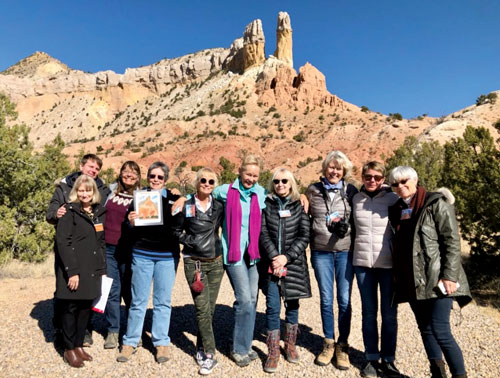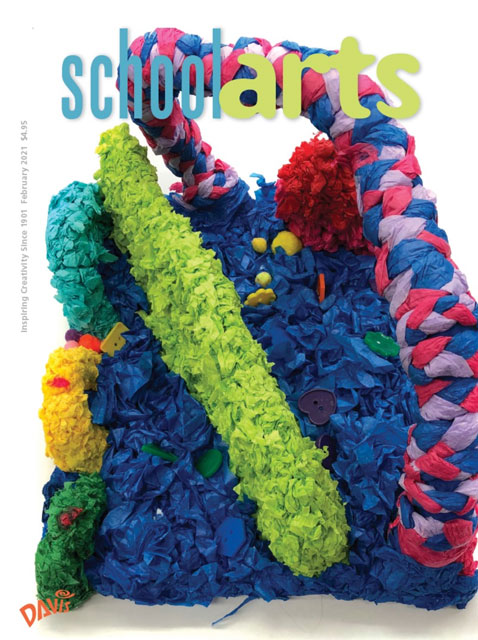.jpg) |
 |
| Nancy and the O’Keeffe docent group at Ghost Ranch, Abiquiu, New Mexico. |
As of this writing, we have no idea when the museums will open and if we might get to be docents again. I’d been following O’Keeffe’s footsteps ever since I first came to New Mexico more than thirty years ago, so I was excited to be accepted into the docent program. Our training was quite comprehensive and enjoyable. The Georgia O’Keeffe Museum is the only American museum devoted to a single woman artist, a testament to her importance in American art history.
O’Keeffe has been recognized as the “Mother of American Modernism.” She was one of the first American artists to explore abstraction as a means of expressing personal ideas and feelings, especially as a response to the natural world. She had a long, productive, and successful career as an artist for more than sixty years, making artworks even after losing her eyesight. O’Keeffe also served as a role model for many female artists who came after her.
Abstraction in art is the simplification of an image to its essence, achieved through the use of composition, shape, form, line, and color. We take this approach for granted now, but it was quite novel when O’Keeffe began working with it. One of her most influential teachers, Arthur Wesley Dow, encouraged her to “fill a space in a beautiful way.” The elements of art and principles of design, so familiar to art teachers today, were inspired by Dow’s theories about composition.
As a student, O’Keeffe mastered the mediums of paint and pastel and proved she could paint realistically, but she chose to explore abstraction as she developed as an artist. I think she would have agreed with Picasso: “Learn the rules like a pro, so you can break them like an artist.”
In this issue, we offer articles that highlight, contrast, and compare realism and abstraction. We invite you to challenge your students to fill a space in a beautiful way.
View this article in the digital edition.


.jpg)

